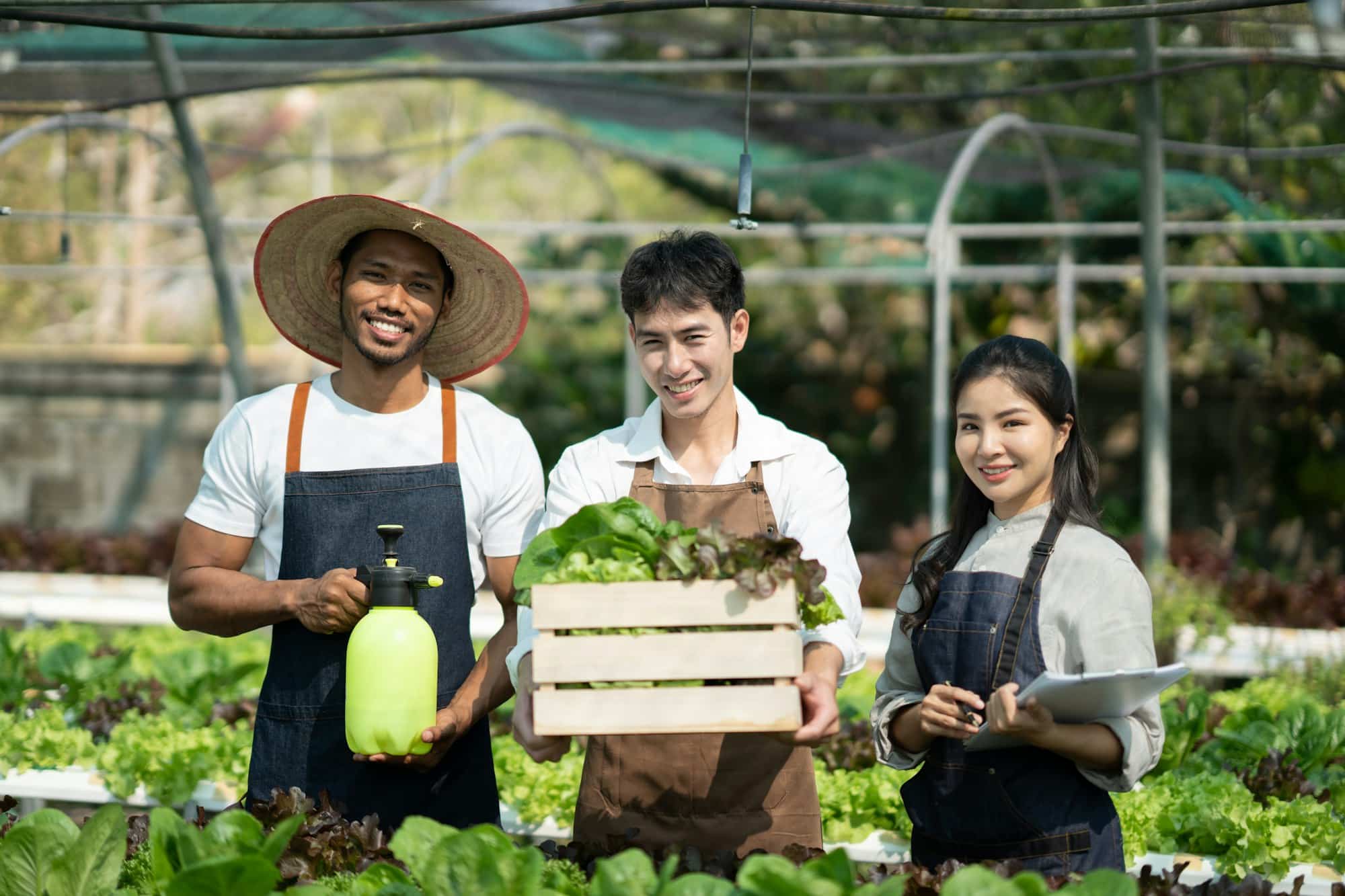How to set up a home hydroponic system for year-round vegetable growing?

Setting up a hydroponic garden at home is an excellent way to enjoy fresh vegetables all year round. This article will guide you through the process of setting up a hydroponic system at home. Hydroponics, the science of soil-less gardening, is a more efficient and productive way to grow plants than traditional soil gardening. Why? Because hydroponic systems control the environment for the plant at the optimal level. This means that plants can develop faster and produce more.
Choosing The Right Hydroponic System
Before getting hands deep into setting up your garden, it’s crucial to understand the different types of hydroponic systems available. Hydroponic systems can be passive or active, recovery, or non-recovery, depending on your specific needs and resources.
Cela peut vous intéresser : How to plan and build a low-maintenance koi pond in a small backyard?
Passive systems rely on the capillary action of the growing medium or a wick. Active systems, on the other hand, use a pump to deliver nutrients to the plants. Recovery systems reuse the nutrient solution, while non-recovery systems provide a one-time nutrient supply to the roots.
Some of the most common hydroponic setups include:
En parallèle : How to Develop a Home Cleaning Routine Using Natural and Non-Toxic Products?
- The Wick System
- The Water Culture System
- The Ebb and Flow System
- The Nutrient Film Technique (NFT)
- The Aeroponic System
Each system has its pros and cons, so you should research and select the one which will best meet your needs, space, and budget.
Gathering the Necessary Equipment
After you’ve decided on the type of hydroponic system that’s best for you, you can start gathering the necessary equipment to set up your garden. This generally includes a reservoir, a net pot or grow tray, a water pump, an air stone or diffuser, tubing, and a grow light.
The reservoir will hold the nutrient solution that feeds your plants. The net pot or grow tray will house your plants as they grow, and the water pump will deliver the nutrient solution to the plants. The air stone or diffuser will aerate the water, ensuring that the plants’ roots receive plenty of oxygen. Tubing will connect all the components of your system, and the grow light will provide your plants with the light they need to photosynthesize and grow.
Building the Hydroponic System
Once you have all the necessary equipment, you can begin setting up your hydroponic system. First, you will need to set the reservoir in a stable location, preferably at a lower level than the rest of the system.
Next, connect a tube from the pump in the reservoir to the grow tray or net pot. This will allow the nutrient solution to be pumped up to the plant roots. If you’re using a system that requires air stones or diffusers, place them in the reservoir and connect them to an air pump using tubing.
After setting up the pump, net pot, and if needed, the air stones or diffusers, it’s time to add the water and nutrients to your reservoir. Fill the reservoir with water and then add the necessary hydroponic nutrients. Make sure to follow the manufacturer’s instructions when adding the nutrients to the water, as the concentration will need to be precise to ensure optimal plant growth.
Planting and Maintaining Your Garden
Now that your system is set up and the nutrient solution is prepared, you can plant your seeds or seedlings in the net pots. Fill the pots with a suitable growing medium like perlite, vermiculite, or coconut coir, and then plant the seeds or seedlings.
Maintaining a hydroponic garden involves regular monitoring of the water and nutrient solution. You will need to check the pH and nutrient levels regularly to ensure they are optimal for plant growth. If the pH becomes too acidic or alkaline, it can inhibit nutrient absorption, leading to poor plant health and decreased yields. Similarly, if the nutrient levels are too high or low, it can affect your plants’ growth and production.
You will also need to keep an eye on the water level in the reservoir. As the plants take up water and nutrients, the water level will decrease. When it gets too low, you’ll need to add more water and nutrients to maintain the correct concentration.
Troubleshooting and Optimizing Your System
Like any gardening method, hydroponics has its challenges. Plants may show signs of nutrient deficiencies or other problems. Don’t panic – with some research and patience, you can troubleshoot most issues.
Lighting, temperature, and humidity are important factors in hydroponic gardening. Depending on the type of plants you are growing, you might need to adjust these parameters.
Remember, the beauty of hydroponics lies in its controllability. As you learn and observe, you can continually optimize your system. With the right care and attention, a well-maintained hydroponic garden can produce an abundance of fresh vegetables all year round.
Ensuring Adequate Lighting and Temperature Control
To have a productive hydroponic garden, the correct temperature and adequate lighting are paramount. Light is essential for plant photosynthesis, the process by which plants convert light into energy for growth. Therefore, it is crucial to ensure that your plants receive the right amount of light. This can be achieved by placing your hydroponic system near a window that gets a lot of sunlight, or by using artificial lights such as fluorescent bulbs or LED grow lights.
The temperature within your hydroponic system is also critical. Most plants thrive at temperatures between 65 and 75 degrees Fahrenheit. If the temperature is too high or too low, the plant’s growth may be stunted, and they may not produce as many fruit or vegetables. Therefore, it’s important to monitor the temperature within your growing area regularly.
In case you are using a deep water culture or water culture system, you may require a water heater or chiller to maintain the water at the optimal temperature for the plant roots. Remember that the temperature of the nutrient solution should be kept between 65 and 70 degrees Fahrenheit for optimal nutrient uptake.
Harvesting Your Hydroponic Garden
As the final step in your hydroponic journey, harvest time is a gratifying moment. Depending on the leafy greens or vegetables you’ve chosen to grow, the harvesting period will differ.
Typically, leafy greens such as lettuce can be harvested as early as a month after planting. For these plants, you can either harvest the entire plant or just pick leaves as needed. For fruiting vegetables like tomatoes or cucumbers, you will need to wait a bit longer until the fruits have fully ripened.
Once you’ve harvested your plants, make sure to check the growing medium and net pots for any signs of disease or pests. Clean out the system thoroughly before starting a new cycle. This will help to prevent any potential issues from affecting your next crop.
Conclusion
Setting up a home hydroponic system can seem daunting at first, but with the right guidance and a little bit of patience, it can lead to a year-round supply of fresh vegetables. The process includes selecting the right system, gathering the necessary equipment, building the system, planting, maintaining, troubleshooting, and of course, harvesting.
By controlling factors such as light, temperature, and nutrient levels, hydroponics allows you to create the perfect growing conditions for your plants. As a result, plants grown in hydroponic systems often grow faster and yield more compared to traditional soil gardening.
So, whether you’re a seasoned gardener looking for a new challenge or a beginner wanting to dip your toes into the world of gardening, setting up a home hydroponic system can be a rewarding and fruitful endeavor.
